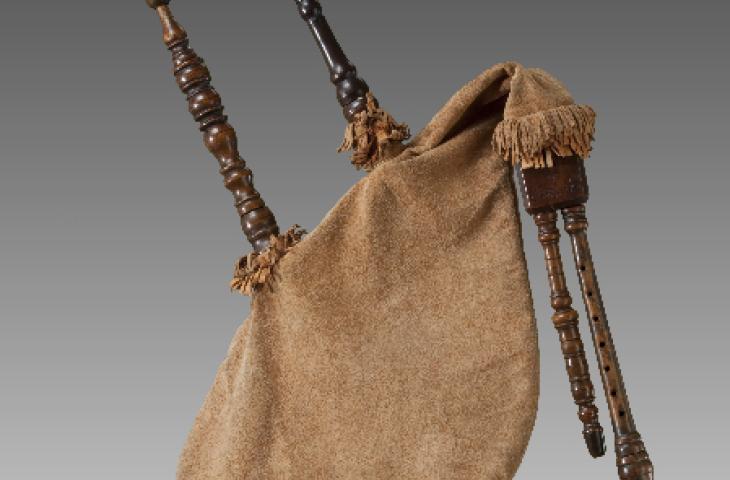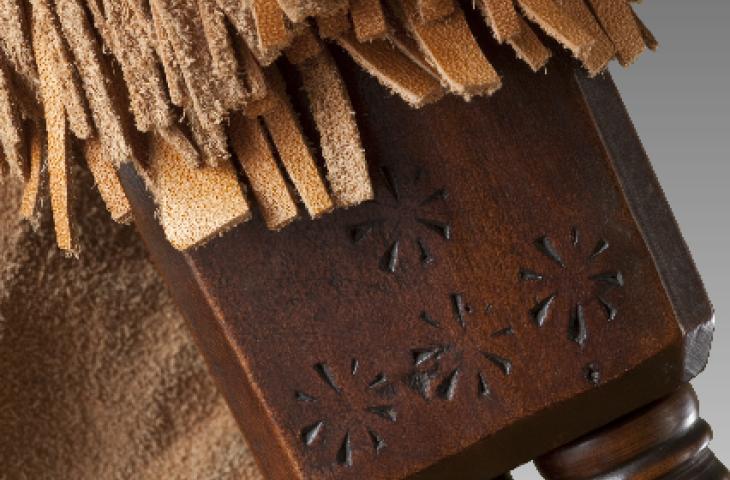The muchosa is the last witness to a rich bagpipe tradition in Belgium. Although the bagpipes disappeared from these regions in the course of the eighteenth century, the presence of the muchosa up to the end of the nineteenth in a large part of Hainaut is well documented. Until around 1840, indeed, it was the most important instrument there at local dances, weddings and seasonal festivities.
The instrument was often played by shepherds and also served to provide musical accompaniment to pilgrimages. It was gradually toppled from its pre-eminent position by the accordion and band instruments such as the clarinet, the bugle and the cornet. The last muchosa player, Alphonse Gheux, threw in the towel in 1912, when the chanter of his muchosa broke and he was unable to find a skilled craftsman to repair it.
The muchosa depicted here consists of a goat-leather bag, a blowpipe, a chanter, a small drone pipe parallel to the shawm and a long, separate drone pipe. Such leather bags were often encased in a cloth cover.
Insofar as is known, just three muchosas have been preserved and all three are in the collection of the MIM.
Muchosa

Muchosa, Arc-Ainières, Hainaut, end of the 18th century or first half of the 19th, inv. 2702
Muchosa
